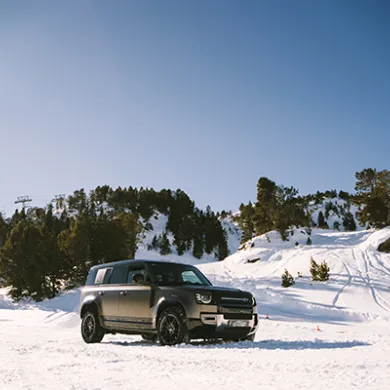Even the most experienced and skilled drivers may struggle with how to drive safely in the snow. That’s because driving in snow can make any car unstable and there is a need to be extra careful. With wintery conditions returning once more, it’s a good time for all drivers to take a moment and to think about what they need to keep in mind before driving in snow and ice this winter.
With this in mind, we’ll outline various useful tips for how to drive in snow in this guide to wintery driving conditions, including all you need to know if driving in snow for the first time. So, let’s get to the main points.

Driving in snow chains: Are snow chains necessary for driving in snow and ice?
One of the things you should you do if you are driving in snow storm conditions that are very extreme, or if you’re going to be navigating difficult roads that won’t have been cleared, is to put snow chains on your vehicle.
As for how do you fit the actual chains for driving in snow chains, well, the snow chains should be placed on the engine-powered wheels, which will be the front two for certain vehicles or the back two for rear-wheel drives. If you have a 4x4, put snow chains on all four wheels.
There are four main types of snow chains, namely metal snow chains, spider snow chains, textile snow chains and hybrid snow chains. Which type of snow chains to use will depend on the type of vehicle and on the exact conditions that you’ll be driving in snow and ice in, since there are different types of snow.
What is the safest speed to drive in snow?
Whether you are driving in snow chains or not, one of the main tips on driving in snow is to reduce your speed dramatically. It is recommended that you reduce your speed by half, or even more, if driving in snow.
There are two reasons for halving your speed when driving in snow and ice: one is because thesurface is less predictable and you’ll want to be going slower in case there is a need to adjust; the second is that these conditions tend to bring poor visibility and you’ll want to be more cautious for that reason.
Reducing speed is especially important for how to drive in snow with an automatic car, because the lack of gears means automatic cars have even less control when on slippery roads.
Other tips for driving in snow for the first time
If it’s your first time driving in snow, the conditions can seem especially daunting and it’s true that you won’t quite know what to expect until you start to drive. The first piece of advice is to consider not going out, unless you absolutely have to. If you’re staying at Grandvalira during a period of very wintery conditions, for example, and you already have your vehicle in a car park in Andorra, it’s recommended that you leave it put.
If, however, you absolutely have to make a journey, be sure to check the weather forecast for a detailed snow report and conditions.
Among the other tips for driving in snow to keep in mind, it is recommended that you drive in a slightly higher gear than you normally would, that you don’t stop on a hill if you can avoid it and that you make sure you conserve fuel. If you follow these tips, you now know how to drive safely in the snow.
